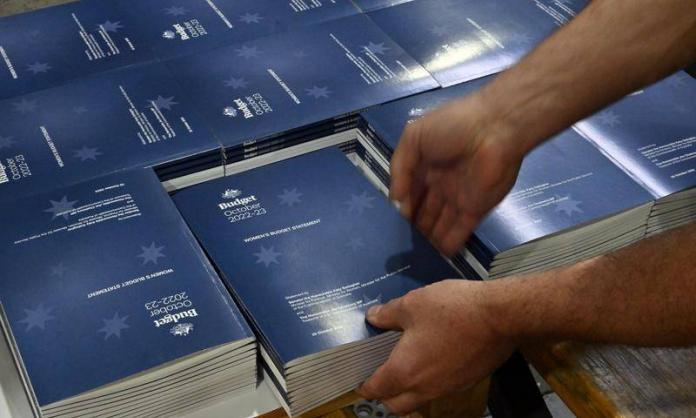Australian workers are suffering the most dramatic reductions in living standards for decades, but the Labor government’s budget will only make things worse. This is obvious if we consider three key issues: real wages, energy prices and housing costs.
The Albanese government was elected in part because Labor said it would protect workers’ living standards in the face of rising inflation. But even if we accept as reliable the budget’s predictions for inflation and wages, living standards will be lower at the end of this Labor government than they were when it was elected.
There is every chance that the situation for workers will be worse still. The budget predicts that nominal wage growth will rise to 3.75 percent next year, up from 3.25 percent in 2022, and that inflation will peak in December at 7.75 percent before coming down next year. Treasurer Jim Chalmers says rising wages and falling inflation will result in workers’ living standards beginning to recover some time in 2024.
But Treasury and the Reserve Bank have for years predicted an uptick in wages, and every time they have been wrong. With the world economy slowing, and Australian GDP growth predicted to fall to 1.5 percent and unemployment to rise by 150,000 next year, the broader economic environment is working against significant wage growth.
They have been wrong about inflation too. The Reserve Bank late last year was predicting inflation at 1.75 percent in 2022, but it now stands at 7.3 percent. The rate for essential goods, such as food, housing, energy and clothing that working-class households cannot easily forego, is closer to 10 percent. And with the budget forecasting energy prices to surge by more than 50 percent by the end of next year, and with food prices constantly spiking due to what has become a regular pattern of climate-induced floods, droughts and fire, it seems only a remote possibility that inflation will fall to the Reserve Bank’s 2-3 percent target any time soon.
All this comes on top of years of wage stagnation. Real wages went nowhere in the decade up to the start of the pandemic and have fallen by 5 percent over the past two years.
Plenty of factors are playing a part in pushing up prices. But big business is one of the chief culprits. Companies now see an opportunity to fatten their profit margins. In the year to June, company profits grew by 29 percent. Mining companies, taking advantage of rising commodity prices, were responsible for a big chunk of that profit bonanza, but even once you take them out, company profits were up by 9.4 percent, well above wage growth and inflation. Far from being “wage-push” inflation —labour costs have been falling for years—it’s a case of “profit-push”.
The Albanese government is barely lifting a finger to help workers. There are some cost-of-living measures in the budget: childcare subsidies starting next June; lower prescription charges for medicines; higher wages for aged care workers; indexation of allowances for those on income support, including JobSeeker, Disability Support and the age pension.
But for every dollar workers save in this way, the government is taking two out of their back pockets. It has scrapped the low- and middle-income tax offset introduced by the Morrison government in 2018. This will result in workers on between $48,000 and $90,000 being slugged with a tax increase of $1,500 next year.
Indexation of income support is completely inadequate. It is annual and retrospective, meaning that at a time of rising inflation, the real value of allowances is dropping month by month. At the very least allowances should be indexed quarterly. Just as importantly, JobSeeker is hundreds of dollars a fortnight below the poverty line, and the government refuses to lift the rate. The government could also relieve pressure on households by extending Medicare to include dental care and mental health support—but it refuses to do so.
Far from helping workers hit by high petrol prices, the government reinstituted the fuel excise tax in September, which, together with cuts to OPEC production, is soon to push the cost of unleaded petrol to more than $2 a litre, lifting the cost of petrol for drivers by more than $1,000 a year on average.
The government says it has a plan to get wages moving, but this seems to consist of tinkering with the enterprise bargaining system and increasing spending on training. Neither will generate wage rises, and at a time of rising unemployment, no boss is going to pay higher wages unless forced by government or by trade unions.
It does not help either that the leaders of our unions are doing nothing to force the bosses to pay more. Far from it, they have accepted three-year enterprise agreements that have locked workers into real wage cuts.
All of this is making inequality worse. Workers will maintain their share of national income if wage rises match combined productivity growth and price rises in a given year. But since the turn of the century, hourly wages have lagged well behind. Companies have extracted the difference in higher profits, resulting in a massive transfer of income from workers to businesses. The wages share of national income is the lowest ever recorded and the profit share the highest. Treasurer Chalmers does not even consider this worth tackling. Quite the opposite, the government is pleased to see big business rake in high profits.
On top of this, the so-called stage three tax cuts will result in those on incomes over $200,000 grabbing an additional $9,000 in income every year after they take effect in 2024, while the benefit for those on median wages or lower will be far less.
Skyrocketing energy prices are a big contributor to inflation. Household energy bills are set to jump by $1,000 on average. There is no justification for this—the cost of generating power or extracting gas in Australia has not increased. It is pure profiteering by the energy companies.
Again, the government is doing nothing to shield workers from the rising power bills. The federal government refuses to emulate the Western Australian government’s gas reservation scheme that, by diverting gas from exports to domestic use, keeps the price down. It will not introduce a super-profits tax on energy companies, as many European governments are doing. Nor will it overhaul the Petroleum Resource Rent Tax, which generates a pitiful income for Treasury even as profits in the sector soar.
Along with other outgoings, housing costs have shot up. Rents rose by 10 percent in the year to September. In Sydney, median rents rose to $650 a week, nearly $34,000 a year. Those with average mortgages are now paying $8,200 more per year as banks lift interest rates, forcing many to forego basic household needs. The banks, however, are doing just fine as they take their time to lift rates paid to depositors while instantly jacking up rates on mortgagees when the Reserve Bank lifts the cash rate.
What is the government’s response to this situation? Fiddling at the edges. It announced with great fanfare a plan to build 1 million new homes over the next five years. But it is relying on the property industry and private investors to build the vast majority of these, the very people responsible for the crisis.
The industry is propped up by a slew of government tax incentives, and if the government’s housing accord takes effect, planning regulations will be significantly wound back. The government is promising just 20-30,000 new affordable homes, and these too will be built in cooperation with the private sector. And while the million new homes may sound impressive, it is no higher than the rate of home building over the past five years. Governments should be stepping in to guarantee the right to a home, and the best way to do that is a crash program of public housing construction and rent freezes for those in private rentals.
The Albanese government is not short of money that could fund programs to secure working-class living standards. It is currently enjoying a revenue windfall worth tens of billions of dollars, and Australia’s net public debt is much lower as a share of GDP than many other comparable countries. Cancelling the stage three tax cuts would save more than $250 billion over the next ten years, allowing the federal government to lift JobSeeker to $70 a day, provide free preschool for all children aged 3 to 5, add dental to Medicare and kick in more funding for hospitals, taking the pressure off the states.
Much is made of the blow-out in costs for the National Disability Insurance Scheme. That could be easily fixed by scrapping the $171 billion allocated to purchasing nuclear submarines and the $100 billion required to service them over the course of their existence.
But that would require Labor to stand up for the working class when it much prefers to cosset the capitalists and the military top brass.









